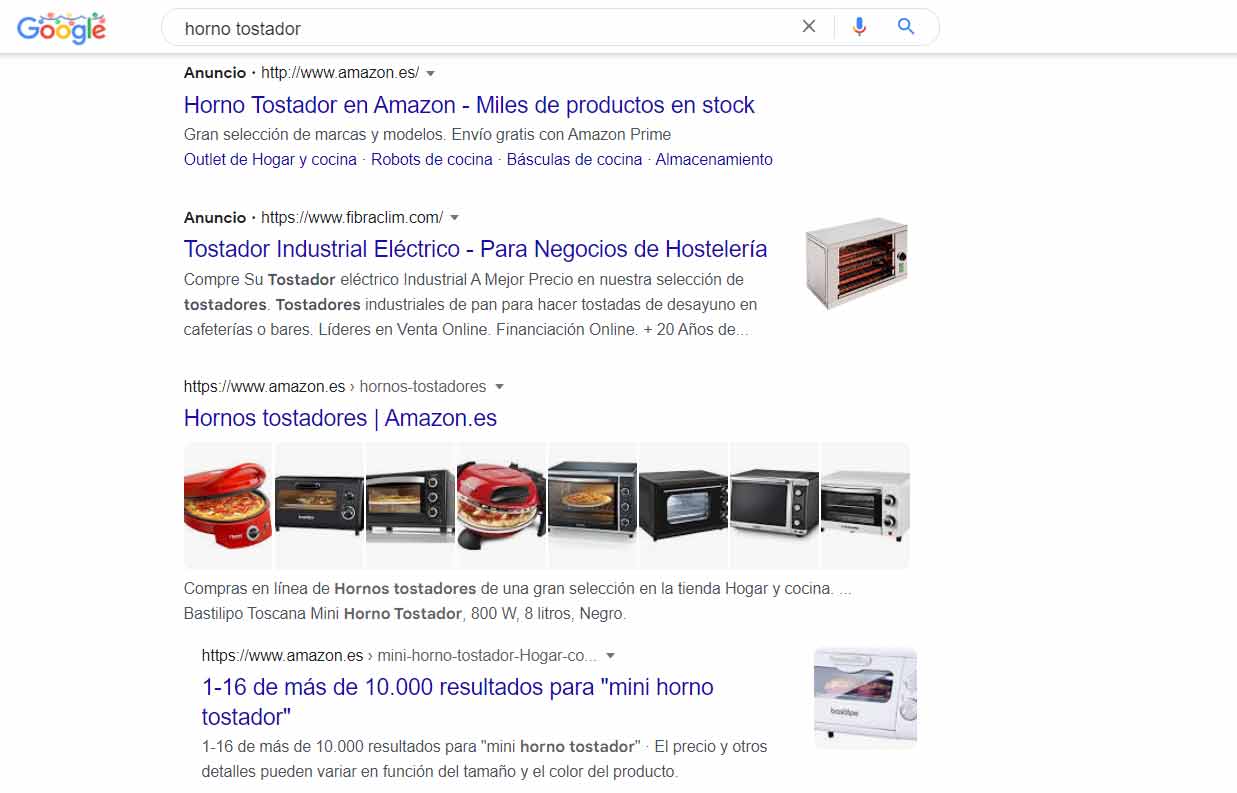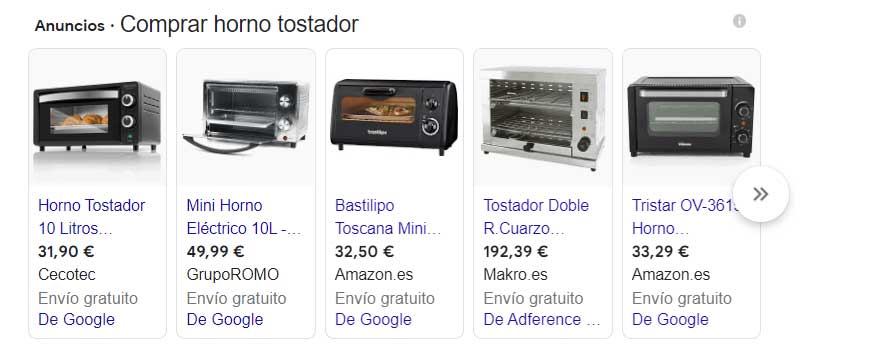How to Determine Keyword Search Intent
When we do keyword research it's not just about finding popular keywords to rank for. Nor is it about identifying words and phrases with low competition that really have the possibility of positioning your website.
If we do not take into account the search intention, keyword research can be much less effective than you imagine.
Here's an example: When someone goes to Google and types in "house paint," what are they most likely searching for?
There are a number of possibilities:
- A company to come and paint your house.
- Instructions for painting a house.
- A painting of a house
- A painting for your house
Although we do not know exactly what they are referring to when they make this query, it is very likely that they are showing us incorrect information.
While there is no tool that will tell you exactly what search engines will show us when they use a particular keyword, there is a process that can be used that will give you a pretty good idea.
But before anticipating events, let's see the three main motivations or intentions behind the keywords.
Three main types of search intent
The process of determining keyword search intent will begin by determining which search query category your keyword falls into. There are three main types of queries: informational, navigational, and transactional.
- Informational: They are inquiries in which people seek to acquire knowledge. They often use words like “how,” “why,” and other question-related words.
- Navigation: queries in which people search for a specific website (for example, “amazon.com” or “mercadona”).
- Transactional: queries in which people seek to perform a specific action through the web (for example, buy a product). Most keywords that have high commercial intent will fall into this category. Search for keywords such as 'buy', 'shipping' or 'online' (e.g. 'book travel online'), or specific product names or models (e.g. 'fujitsu air conditioning remote control AR-RCD1C").
It is interesting to note that most web-based content is informational in nature. In fact, research has even indicated that around 80% of all queries are informational, with the remaining 20% split evenly between browsing and transactional.
Some experts add another category of intention: commercial investigation . For example, queries where people search for product reviews or comparisons. Typically, these searches would be performed before a transactional query; In other words, when people are still in the research stage but intend to buy.
Steps to understand keyword search intent
Once you have an idea of a keyword you would like to rank for, you can begin the process of determining search intent for that keyword. Below are three steps you can take to better understand what people are searching for.
Step 1: Examine the SERPs
While you may not immediately know the intent behind a certain word or phrase, Google's search algorithm usually does. This means that studying SERPs (search engine results pages) can give you key insights into a searcher's intent.

Each element of the SERP gives us a clue about search intent. Remember to pay attention to:
- Paid ads
- Organic Listings
- Knowledge graph results
An example: Let's say you're thinking about optimizing a product or category page for "toaster oven." While you might assume (and rightly so) that anyone searching for this term is looking to buy a toaster oven, there are actually a number of possibilities. They may be looking for:
- Compare different toaster ovens
- View images of toaster ovens
- Find out where to buy a toaster oven locally
- Find the best-selling or top-rated toaster ovens
- Buy a toaster oven online
As you can imagine, the content and SEO of your page will be quite different depending on the actual search intent. Fortunately, Google already knows what people want to see when they search. We just need to enter our keyword and look at the first page of the SERPs:

When looking at the SERPs for “toaster oven,” it is immediately clear that most users will have a strong commercial intent when using this query. The big box store ads are category pages for toaster ovens, and there are product images (ads) all over the right side of the page.
In fact, Google even tells us that they think we're trying to find a product:

The top 3 organic listings are product category pages from big box stores (along with some images of toaster ovens). In fact, every listing on page 1 of the SERPs is a product category.
Clearly, there is a commercial intent behind this keyword. This is a great indication that most people looking for a toaster oven are not just looking for information or images, they are looking to find and/or buy toaster ovens.
But can we dig deeper to further analyze business intent? Can we find out how close people are to making a purchase when they use this keyword? We'll see.
Step 2: Use Google Ads to determine the scope of commercial intent
While we may not intend to bid on this keyword, it is helpful to know what others are willing to pay and how competitive it is.
Generally speaking, the greater the suggested offering and competition, the greater the commercial intent.
Again, while ranking for this keyword is not a guarantee that your visitors will actually become customers, it does give us a good indication that people using this keyword have purchasing intent.
Step 3: Analyze your analytics
The above two steps can be used regardless of whether you are creating new content or optimizing old content. Step 3, on the other hand, will help you determine if your existing content is properly optimized for the user's search intent.
Know if you content marketing Meeting your visitors' expectations is key: Instead of constantly having to create new content to drive conversions, you can save time and money by modifying existing content.
Perhaps the most important metrics to check here are your bounce rates. High bounce rates from search engine referrals may indicate that your content does not match the searcher's intent.
Check how high your bounce rates are from all visits to your site through organic traffic. If these rates are significantly higher than your other traffic sources (social media referrals, direct traffic, etc.), the problem may be that the keywords you're ranking for on your page don't match your content.
Here's how to access this information:
- Enable Google Analytics integration
- From your dashboard, click Analytics > Google Analytics
- Select Acquisition > Organic Search
- Enable metric list bounce rate
This will give you the bounce rate for each search term, as well as other key metrics such as pageviews, exits, and session duration.
While obviously there may be other reasons why high bounce rates occur:
- not be compatible with mobile devices,
- have a confusing or cluttered layout
- poor website usability
All of this will make it more likely that a single page with above-average bounce rates indicates a problem with search intent. .
What type of search intent should you optimize for?
While it may seem like transactional queries are preferable since they are more likely to result in conversions, answering this question really depends on your goals. For example, if you have a content-based site and are primarily interested in increasing page views, you'll probably want to focus more on informational queries. These will tend to be easier to rank for and cheaper to bid on if you are using paid ads.
If, on the other hand, you have an eCommerce site and are looking to sell products, you'll want to focus primarily on transactional (and business research) queries.
Keep in mind that all sites can benefit to some extent from ranking informational and navigational queries. While these searches may not immediately generate sales, they can provide the opportunity to gently guide visitors through the sales cycle, from awareness to purchase.
Summarizing
When you create new content, whether it's blog posts, product descriptions, or category pages, ask yourself what you hope to accomplish with that content.
Are you looking to generate page views or do you want people to buy? Either way, find out what people are really searching for when they enter your keyword and then create content that best matches that search intent.
Related articles
Do you need to update your website?
Do you need any of our web design services? In IndianWebs We have extensive experience, and a team of programmers and web designers in different specialties, we are capable of offering a wide range of services in the creation of custom web pages. Whatever your project is, we will tackle it.





